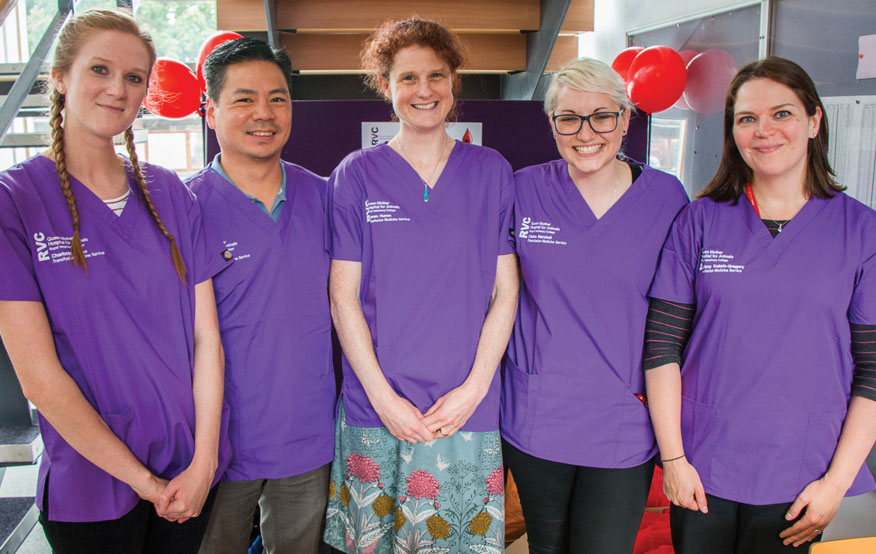A new era for feline transfusion medicine
Clinical Connections – Summer 2016
The RVC has pioneered a new blood collection system for cats which minimises the risk of bacterial contamination of the blood product.
The new system enables feline blood to be available whenever it is required, thus supporting various specialist teams within the Queen Mother Hospital for Animals.
Feline transfusion medicine has always been difficult. Dogs are relatively easy as, although they do have blood groups, you can administer any dog blood type to any dog. We can also use human blood bags for collecting canine blood and, of course, usually dogs are easy to train to be donors, lying still for the ten minutes required and very happy with their bowl of dog food afterwards!
With cats it’s a different story. It’s not every cat that is calm and comfortable enough to stay still during the donation process - though it is amazing how our highly specialised donation team can charm them, their owners are often quite amazed by what they achieve.
Cats also are like humans in that there are three main blood groups and they can only be administered blood of the correct type, otherwise a potentially fatal reaction can occur.
Finally, as you might imagine, we can’t use human blood bags to collect feline blood as they are far too big. This has been an issue for veterinary medicine for many years, as the lack of blood bags for cats meant that it was difficult to feel confident that blood collected without them was not contaminated by bacteria and was acceptable to store in a fridge, as canine blood is.

This meant that cat blood was only collected at the QMHA by the Transfusion Medicine nurses when it was required, and then was used immediately. As our donor cats have owners who live normal lives (some work at the RVC and some do not), if a severely anaemic cat was seen in the middle of the night, we couldn’t ask them to bring their cat in to donate blood.
Until 2015 there was an artificial blood product (Oxyglobin TM) available that we could treat cats with in this situation, but unfortunately production was stopped. This prompted the RVC transfusion medicine team to design a new blood collection system for cats which was as safe as that for dogs in minimising the risk of bacterial contamination of the blood product. After a few false starts, a successful system was discovered and the QMHA now has feline stored blood to allow treatment of anaemic cats whenever required.
This has led to the QMHA vets being able to treat their patients more effectively, with the surgery team being more confident that if one of their critical patients had sudden and unexpected blood loss, they would have blood available quickly. The stored blood has also been used by oncology, internal medicine, orthopaedic and critical care patients.
Donor owners are also very happy with the new system as it means they can book their cats in to give blood when it is convenient for them rather than being called and asked to come in in a more unpredictable fashion. So from sick cats to blood donor owners, everyone is benefitting from the new system. The QMHA is the only veterinary hospital using this method to store feline blood.
If you think your cat or dog could be a life-saving blood donor please do contact us at blooddonor@rvc.ac.uk or check our webpage: http://www.rvc.ac.uk/small-animal-referrals/for-pet-owners/blood-donor-programme
Sign up to get Clinical Connections in your inbox rvc.ac.uk/clinical-connections
